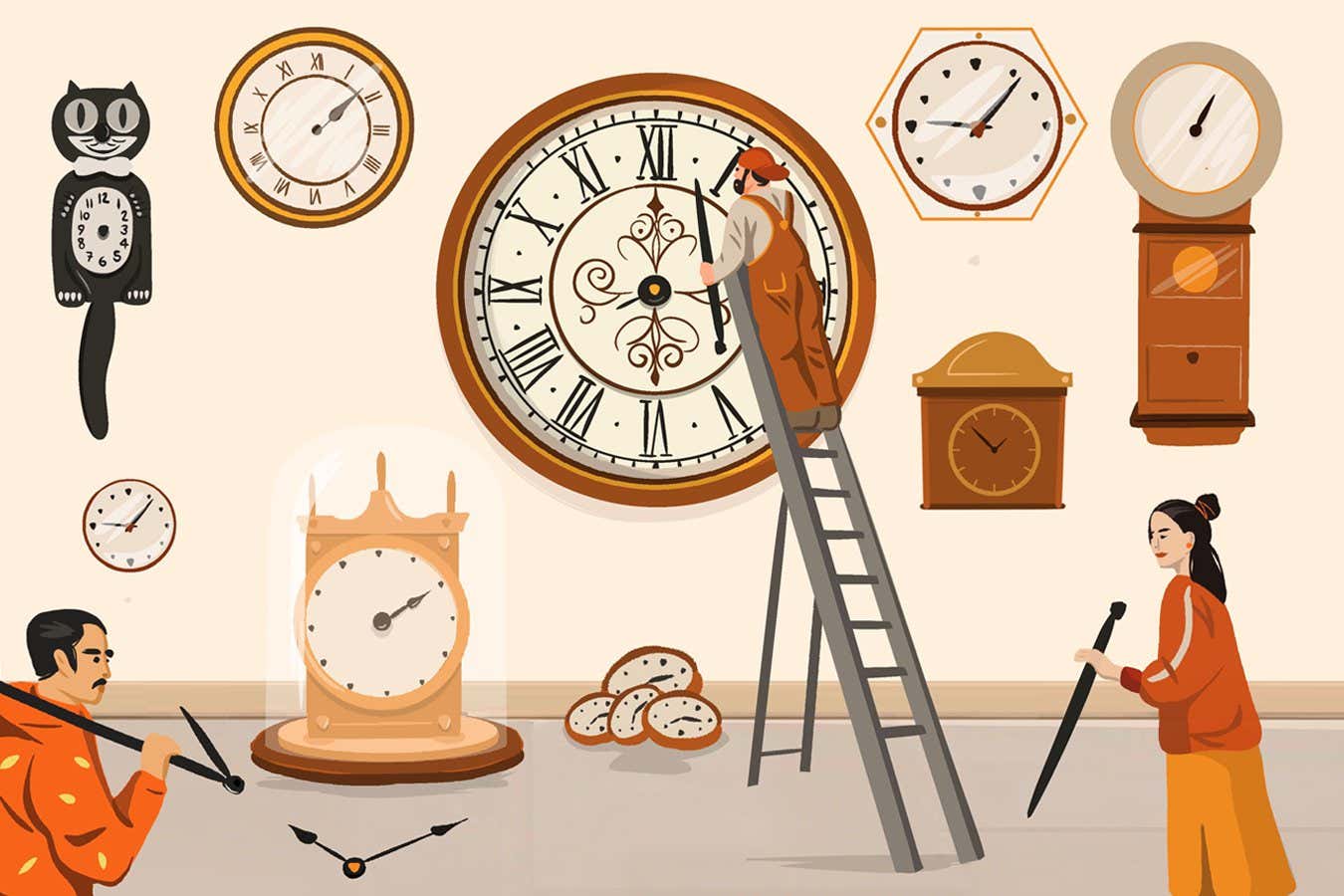[ad_1]

On a large table draped with hundreds of cables, a maze of mirrors and lenses bounces and guides a thin beam of laser light. It culminates at a silvery capsule, which holds 40,000 strontium atoms cooled to within a whisker of absolute zero. This delicate edifice is an optical clock, one of the world’s most accurate timepieces.
Instruments like this aren’t exactly designed to be portable – which makes it more than a little surprising that the operators of one such device at the German national metrology institute packed it into a trailer and sent it hurtling down a motorway. It was the start of a perilous journey: a bad jolt could disrupt the beat of its precise ticks. But it was necessary.
That was because, in 2022, scientists globally agreed that we should start work on redefining the second based on our latest and greatest timekeeping technology: optical clocks. However, this meant bringing together several of the world’s best specimens for comparison.
Doing so proved a huge challenge, but it will surely be worth the trouble. A new definition of the second will be profoundly consequential for nearly every other measurement that scientists use to describe nature, from speeds to masses and more. Our efforts to define it more precisely, then, will ripple out across our entire view of the world. “This was the first global comparison…
[ad_2]
Source link : https://www.newscientist.com/article/mg26635372-500-the-epic-quest-to-redefine-the-second-using-the-worlds-best-clocks/?utm_campaign=RSS%7CNSNS&utm_source=NSNS&utm_medium=RSS&utm_content=home
Author :
Publish date : 2025-04-02 16:00:00
Copyright for syndicated content belongs to the linked Source.